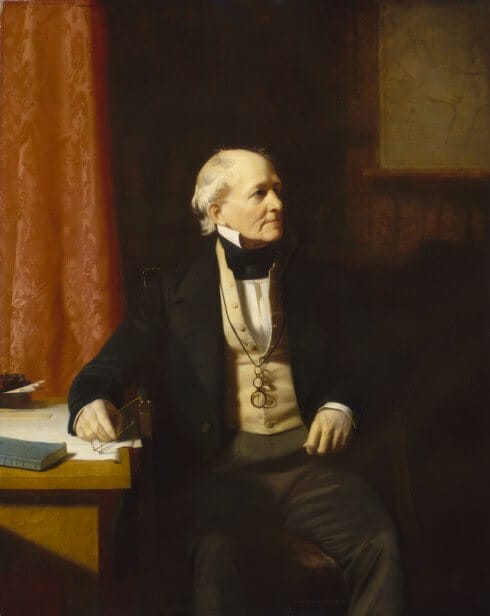
I’m increasingly seeing gross misuse of the Beaufort scale. Here’s an example:
Last night the mid-fleet took a pounding as a depression passed to their north and they were blasted by its associated cold front. During this one of the most northerly boats…saw sustained winds in the low 40s and one gust of 59 knots (i.e. Force 11/violent storm on the Beaufort scale)…
A single 59 knot gust in a cold front does not constitute Beaufort Force 11 or even close.
The conditions described above are Force 9/strong gale. That’s a lot of wind, no doubt, although probably not that dangerous to a well found and handled yacht because the winds were short lived and so would not have built a really big sea.
Force 11 means steady winds of 55-63 knots and wave heights of 37-52 feet. The key point being that in a Force 11 storm the winds do not drop below 55 knots.
Force 9 is a fairly routine gale at sea for a well found yacht, Force 11 for any sustained period is a full survival storm—as bad, or possibly worse, than the ’79 Fastnet storm.
Let’s not abuse a good system that has served mariners well for over 200 years just to sound salty and tough.

Also, is the Beaufort scale really applicable on inland or protected waters where limited fetch prevents the buildup of the highest possible waves for a given wind speed?
For those interested, a really good read about the development of the Beaufort scale is Defining the Wind: The Beaufort Scale and How a 19th-Century Admiral turned Science into Poetry, by Scott Huler, 2005.
Another vote for Defining the Wind.
Hi Ann and Marc,
Thanks, I will put it on my reading list.
Well said John. Misinformation makes it more likely that some people misinterpret correct information and are unaware of the risk they’re taking on.
I saw the following comment last week in a yachting magazine review of a Gunboat 55 catamaran: “The wind didn’t dip below 20 knots and we saw frequent rain squalls with 30-knot gusts – a full blown gale in apparent wind speed terms”. While not technically a use of the Beaufort Scale I’d say it effectively amounts to exaggeration/misuse of “[full blown] gale” when the comment is made by a yachting magazine.
Hi LachlanC,
A very good point. The misuse of the word gale is really dangerous because people go out in what is really no more than a fresh breeze and then assume that they are ready to weather a gale at sea. The reality of a real gale then catches them unprepared and it doesn’t end well.
I can’t tell you the number of people who tell me they were beating to windward into a gale—maybe in the Queen Mary, but not in any reasonably sized sailboat, and that includes the Gunboat.
Even in my steel full keeler, working to windward under staysail and reefed main only at 32 knots (Beaufort force 7 or “near gale”) is difficult and I would only try it if forced by circumstance and if the seas were not fully developed to their full 5-6 m height. It’s hard on crew and gear. I’ve tried it in my fibreglass 33 footer, and it’s significantly harder.
Why do we use the Beaufort scale today?
It was a clever way to quantify wind speed before instruments existed.
Today, we should be using knots (or metres/sec)
Hi Neil and Dick,
I’m with Dick on this one. Properly used the Beaufort scale defines the conditions in a much more useful way than wind speed since it includes a range of wind speeds and sea state. Without the Beaufort scale sailors tend to slip into the silliness of defining the conditions by the highest gust they saw on their often inaccurate wind instruments:
When in reality often the commenter saw a single gust to 50 knots in a squall line in a front that was barely Force 7 (near gale).
Agreed. The sea state is a more reliable indicator of wind speed in aggregate and is also useful in gauging where you are in the system passes over you. For instance, if you dig deeper into the literature of how long the “developed sea state” takes after the wind starts winding up, you can compare this to available GRIB files or similar data to gauge how long you are likely to continue with the wind or the high seas. This in turn will dictate decisions to run off, or to heave to. Sometimes it’s worth a six-hour beat (if possible); other times, not. Observations of the sea state as per Beaufort can help to guide the skipper and crew.
Hi Neil, i
In many ways I agree with you, but I think that certain information looses meaning in great specificity whereas I think an argument could be made that the Beaufort Scale conveys the sailing conditions in a manner that reflects the reality at sea more accurately.
My best, Dick Stevenson, s/v Alchemy